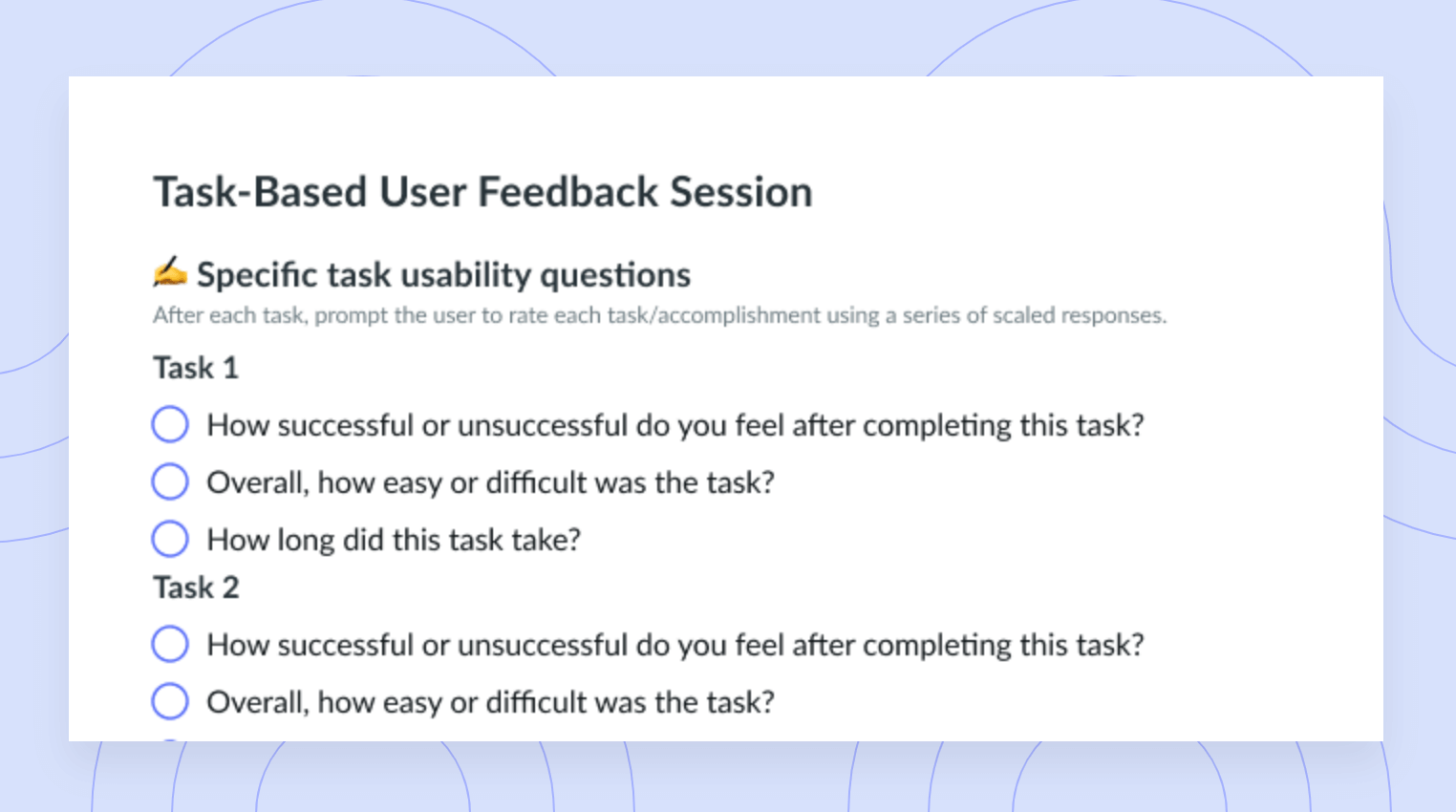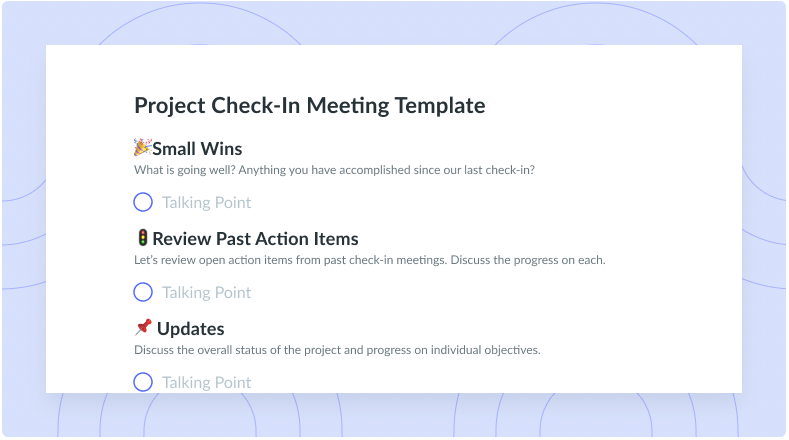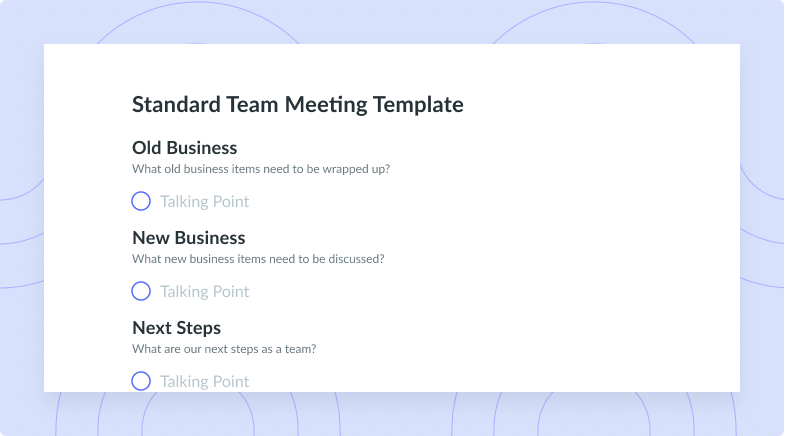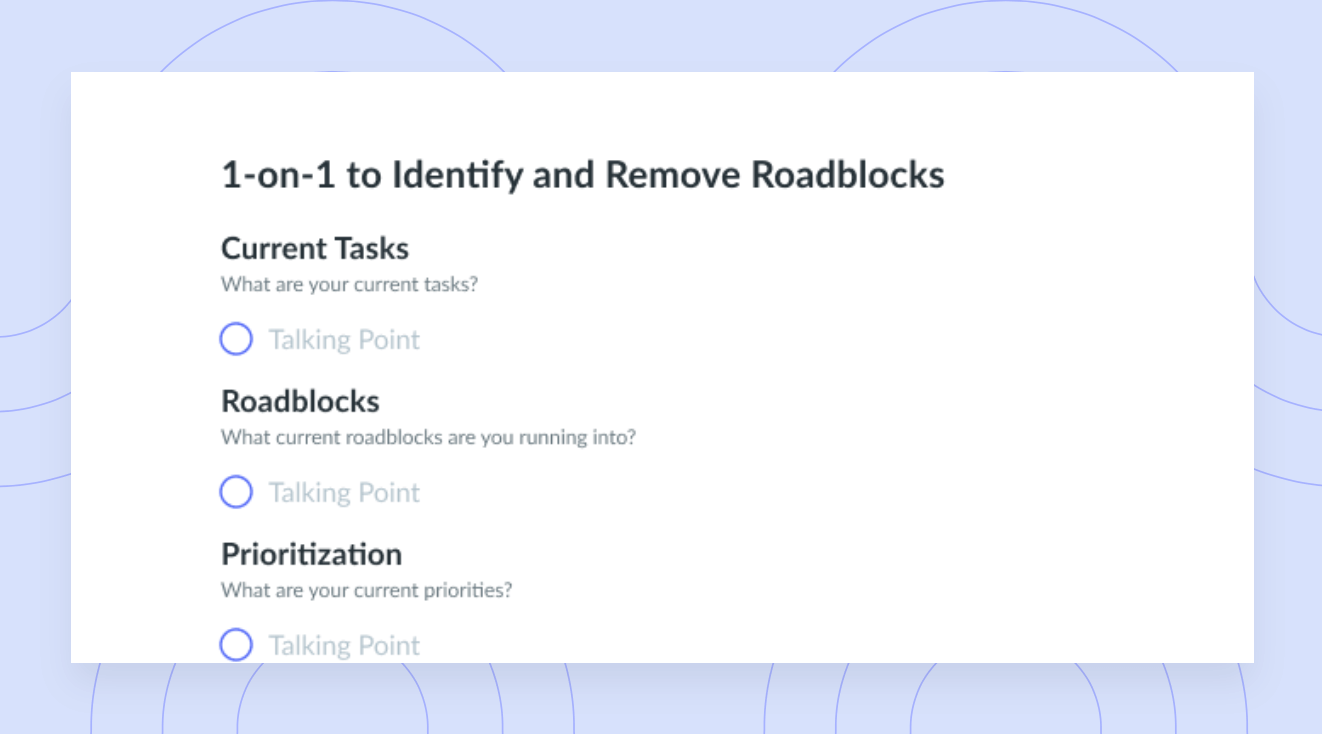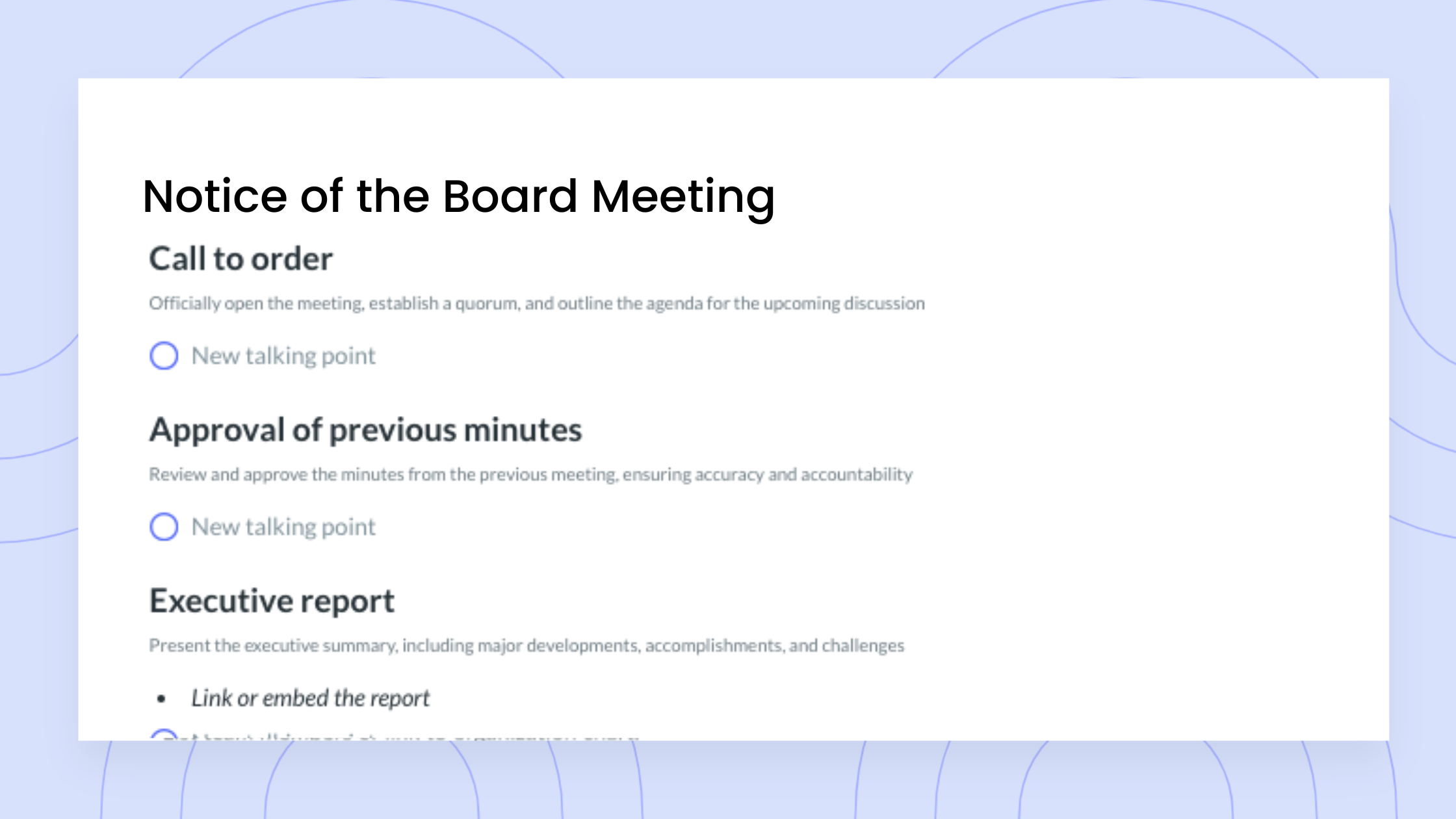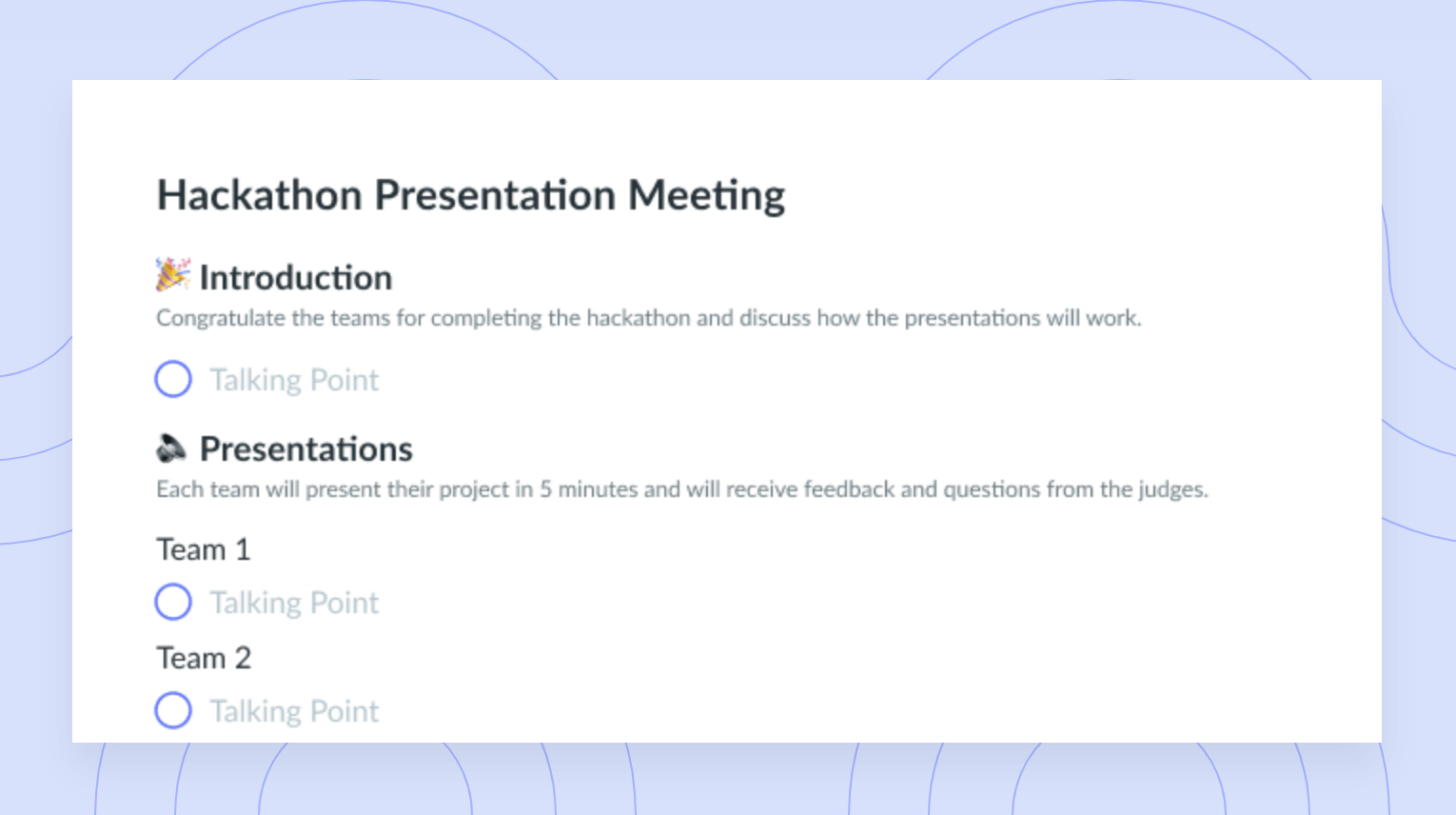How to Level-Up Your Leadership With Task Relevant Maturity
Task Relevant Maturity is a central management framework for highly productive teams. Learn everything you need to know about it.
Task Relevant Maturity (TRM) is an important framework with which leaders should familiarize themselves, especially those seeking to support and maintain high-performing teams with a high output. This model in management acknowledges that different individuals have different levels of experience and competence in particular areas, meaning that they need to be managed differently.
The Task Relevant Maturity management approach was coined by Andy Grove, the Co-Founder and CEO of Intel. Regarding leadership, Andy suggests that management styles should vary based on the TRM of your employees. This article discusses what Task Relevant Maturity is, why it’s important, how to implement it, and some mistakes to avoid so you can tailor your management approach to fit your team members.
- What is Task Relevant Maturity?
- Why is Task Relevant Maturity important?
- How to implement Task Relevant Maturity
- Task Relevant Maturity mistakes to avoid
What is Task Relevant Maturity?
Task Relevant Maturity is the combination of any employee’s experience, training, readiness to take responsibility, and achievement orientation for a particular task at hand. In this way, it is plausible (and often the case) that the same person or group has a TRM that is high in one area but low in another.
1Low TRM:
When an individual or a group has low TRM, the most effective approach is to offer specific, precise, and detailed instructions for the task at hand. In this case, leaders should provide substantial background context, discuss what needs to be done, when, why, and how the task needs to be completed. This structured approach is necessary when individuals do not have substantial experience in the business area. The manager needs to be more hands-on to help support individuals so employees can gain confidence in the area that’s unfamiliar to them.

Great meetings are just the start
Level up your meeting habits to boost engagement and productivity with a collaborative meeting agenda. Try a tool like Fellow!

2Medium TRM:
Medium TRM means that the individual or group has some experience in completing these types of tasks, so leadership doesn’t need to offer overly detailed instructions or context. Instead, it’s important and more effective for management to adopt an approach more focused on support, encouragement, and open lines of communication so the manager is now paying more attention to the individual or group than to the task that needs to be completed. Medium TRM means giving more autonomy to employees while enabling and assisting individuals to complete their tasks on their own. While expectations should be clear, the means to attain the goal can be left up to the individual.
3High TRM:
When the TRM is higher, leadership will again need to modify their management style. High TRM individuals and tasks need little involvement from management and guidance should be kept to a minimum. Leadership should focus on the development of a mutual agreement with the individuals on the goals, and then give full autonomy to the employees to complete the tasks at hand. While it should be communicated that the manager is there to support the individual or group, high TRM often means that guidance is no longer required because the person feels comfortable and confident executing the task in this business area.
Why is Task Relevant Maturity important?
Task Relevant Maturity is important because it’s a great way of supporting your team in an individual and personalized way. Accommodating each team member’s needs will make employees feel supported and encouraged to keep learning and growing. Identifying and acknowledging your team’s strengths and weaknesses also helps develop your self-awareness as a leader, which is one of the most important skills in leadership. Moreover, this management framework can help you and your team avoid mistakes, build trust while still verifying work, improve task alignment, promote engagement, and provide great opportunities for autonomy. Overall, TRM builds trust and improves communication across the whole team.
How to implement Task Relevant Maturity
- Host regular one-on-ones
- Understand your team
- Provide feedback
- Be aware of your own skills
- Create a plan
1Host regular one-on-ones
One-on-one meetings with your team members are the most ideal opportunity to discuss your employees’ Task Relevant Maturity. If the TRM is a method relatively new to you and your team, you may need a weekly one-on-one, but once you’re more comfortable, these meetings are more likely to happen on a monthly basis (as more of a check-in). When you assign a new task to a team member in an area in which they may not have as much experience and they may experience challenges, you should go back to meeting on a weekly basis so you can go through a detailed approach on how to tackle the task in the most effective way.
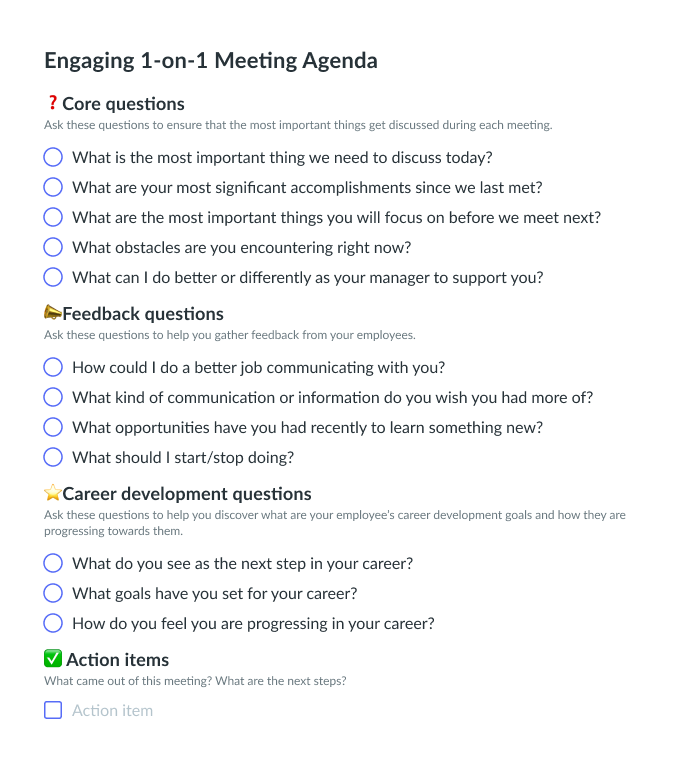
2Understand your team
It’s important to identify and understand where your team members are in terms of their level of experience and comfort in different task areas. This is something that you can get to know better in your one-on-one meetings. It’s essential to ask your employees good questions so you can determine where each person’s experience lies and how to best support them for the different responsibilities to which they’ve been assigned. Identifying each individual’s TRM level for each of their tasks is essential for successfully meeting your organizational goals. Asking good questions will provide you with more context and give you a deeper understanding of experience levels so you can avoid misalignment and failed attempts at completing particular tasks.
Examples of questions to ask:
How comfortable do you feel in completing this task?
What kinds of tools and resources would be the most helpful to you in completing this task?
How can I best support you in successfully completing this task?
What is the most effective way for us to communicate as you work towards completing this task?
3Provide feedback
Understanding your employees’ TRM levels is also important for providing them with useful feedback. While you may be able to see progress from a high level, knowing your employees’ TRM enables you to give your team members more detailed feedback so you can help them with their learning and development. With Fellow, you can provide your team members with feedback in real-time, you can ask for feedback, and you can also track feedback to monitor progress. Research shows that employees who receive consistent feedback feel more fulfilled in their jobs because they are better supported. Tracking your feedback will also allow you to monitor and evaluate TRM levels for each employee.

4Be aware of your own skills
In leadership, developing your own awareness of your skillset is important because it allows you to better support your team members. Self-awareness in management relates to understanding how your decisions affect others, identifying strengths and weaknesses within the team, recognizing mistakes, acknowledging challenges, and devising a way forward as you problem-solve complex issues. Understanding your skills as a leader is important for TRM because there will be instances where team members have responsibilities with which you’re unfamiliar. In these instances, it’s important to think outside the box and find ways to support your employees, whether this is by participating in training programs or working with other leaders who are better versed in the area of the business.
5Create a plan
Creating a plan is especially important for leaders who are working with low TRM. Your plan needs to be detailed and outline exactly what needs to be done during a particular timeline. In your plan, it’s important that you engage in a shared language that is understood by all individuals involved in the task and that you find alignment so when your team members lay out their visions, you can compare them to yours and align everyone’s thoughts. You can learn a lot about your team members by looking at their TRM plans—look at whether their lists are bulleted, are detailed, or use images, and observe how they respond to your feedback and what their own suggestions are for execution. With Fellow, you can use the action items tool to assign, provide instructions for, visualize, and prioritize all your TRM to-dos in one place and sync them with softwares like Jira, Asana, and Zapier. This way, you can keep track of what has been completed and what still needs to be done, and add tasks as they arise so you can continue to support your team until the goal is attained.
Task Relevant Maturity mistakes to avoid
- Seeing TRM as synonymous with trust
- Assuming everyone has context or background information
- Failing to educate your team
- Delegating to the wrong person
- Rushing the process
1Seeing TRM as synonymous with trust
Trust is something that is built over time and that grows when a leader is satisfied with the work being completed.
2Assuming everyone has context or background information
It’s not fair to assume that employees have the same level of knowledge as you do. Ensure that you’re explaining tasks and important concepts in detail with added context and leaving time for questions.
3Failing to educate your team
If you have particular skills that are going to be valuable to your team, take the time to teach these skills to other people. Making a habit of doing so is more effective than having your team members learn through failure.
4Delegating to the wrong person
Ensure that you’re allocating the right tasks to the right people. Play to the strengths of your team members and ensure their tasks are aligned with their skill sets to keep them feeling motivated.
5Rushing the process
Take your time in assigning tasks to your team members. The planning process is important because it will determine the success of the TRM method and improve your decision-making abilities.
Parting advice
Whether you’re using TRM for ad hoc tasks or long-term goals, this framework is highly effective for teams with a high output of tasks. Any project will benefit from using different levels of TRMs based on a person’s level of experience in a particular task because the individual will be managed in the most effective way possible. This concept management framework will allow you to get to know your team members’ levels of ability on a deeper level and give you the opportunity to support them in the most effective way possible. Moreover, the TRM framework will help you develop a deeper self-awareness regarding your own skills and management style so you can optimize any opportunities to grow as a leader.

![Productive Tactical Meetings: 8 Tips [+ Free Templates]](https://fellow.app/wp-content/uploads/2022/08/Tactical-Meeting.jpg)
![10 Tips for Managing Freelancers [+ Free Templates]](https://fellow.app/wp-content/uploads/2022/06/Managing-Freelancer.jpg)






